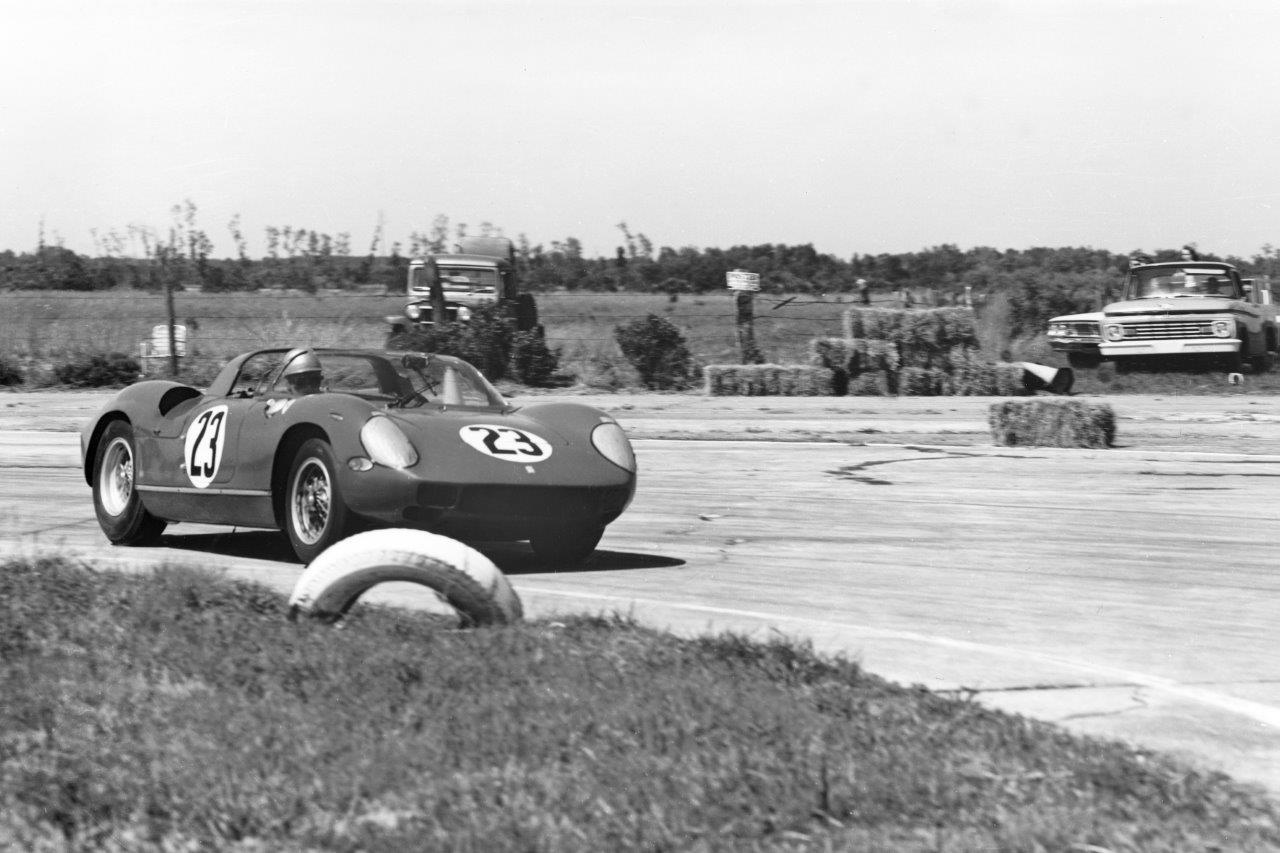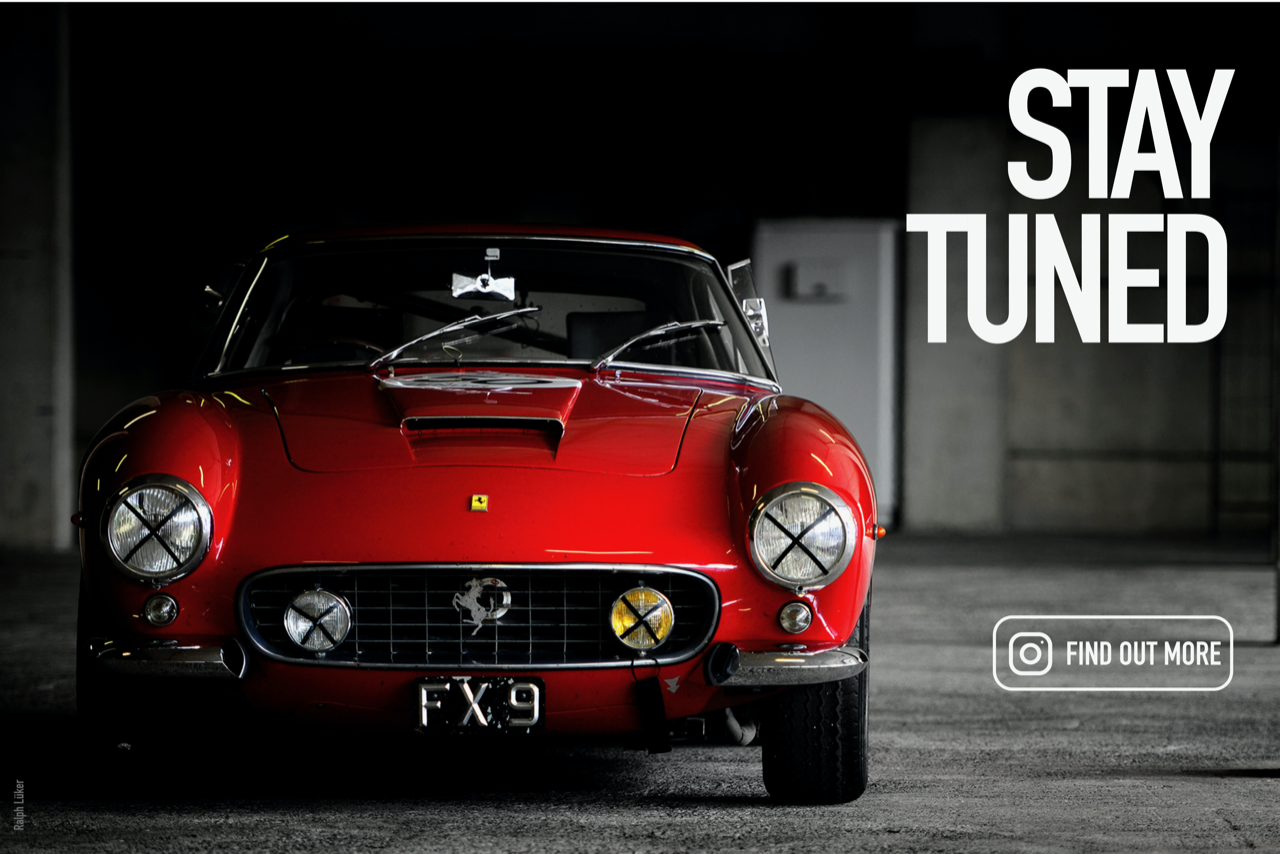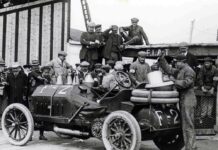Despite the reluctance of Enzo Ferrari to build a competition car where the engine was not placed in the front of the car, in 1963 he finally accepted that to remain competitive in sports car racing, the engine would have to be located behind the driver. In 1963 the Ferrari 250P sports prototype was unveiled featuring a V-12 engine placed directly behind the driver with a tubular spaceframe chassis designed by Mauro Forghieri.

For 1964 the engine capacity was enlarged from 2,953cc to 3,285cc. The revised model was named the 275P and its most notable feature was a rollbar situated behind the driver in the open cockpit, the rollbar also serving as a form of aerofoil. The photograph shows a 275P during the 1964 Sebring 12-Hours, the second race of the world championship season, where it was driven to second place overall by Ludovico Scarfiotti and Nino Vaccarella. The race was won by another 275P driven by Mike Parkes and Umberto Maglioli with further Ferrari in third place. Over the course of the twelve hours the winning Ferrari covered 1,790 kilometres at an average speed of 149 kilometres per hour. After years dominating sports car championships, Ferrari was about to experience some serious competition from Ford as, in fourth place, was the new Daytona Cobra Coupe entered by Shelby American and backed up by several Cobra roadsters that took a clean sweep of the GT class. Ford had come to international motorsports with no previous experience but was determined to achieve success whatever the cost.
From the book ‘Moments in Motorsport’ by Trevor Legate










